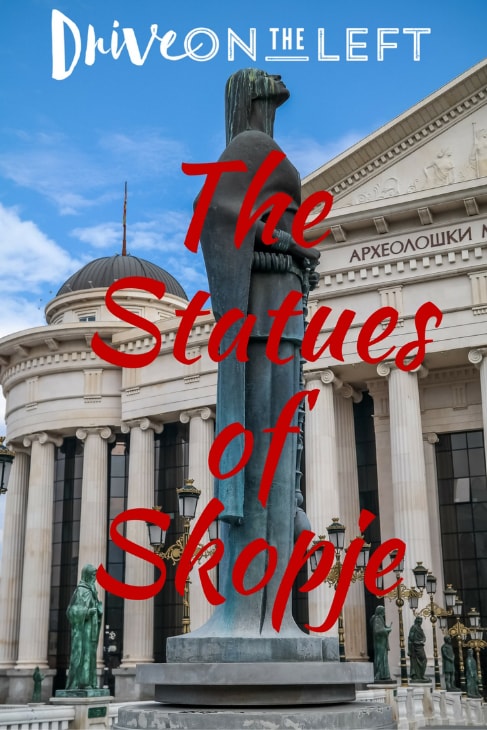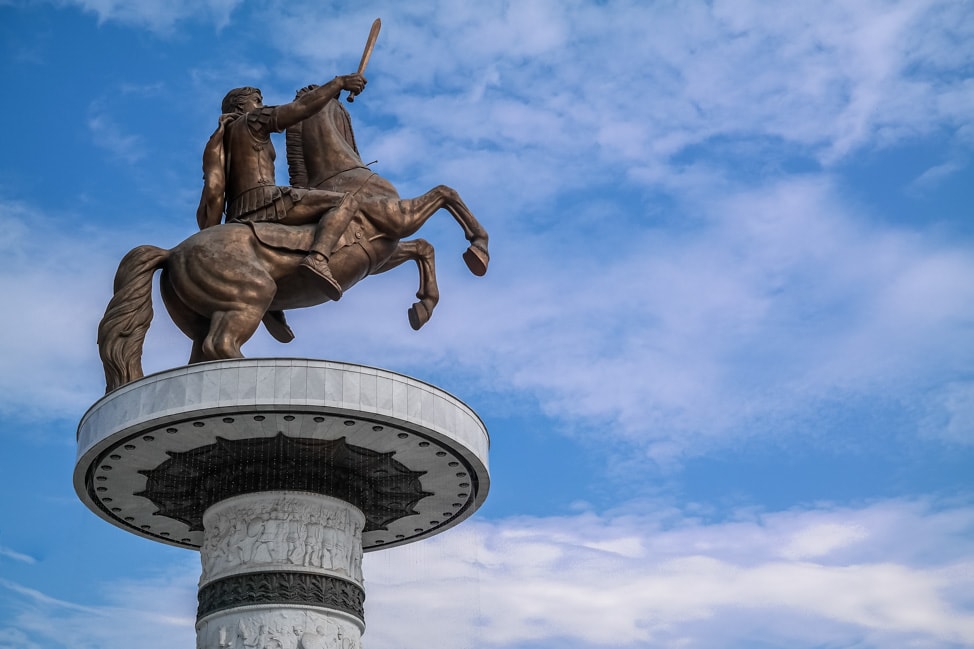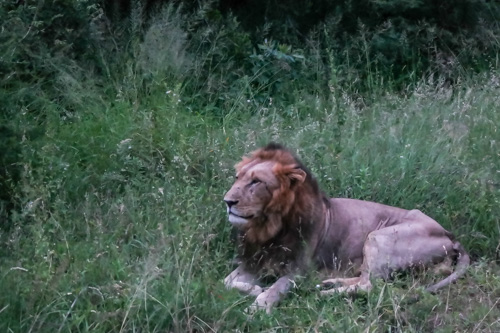The Statues of Skopje, Macedonia
‘I hope you’ll really enjoy my city. We’ve made a lot of improvements in recent years.’
This nicety, from our AirBnB host, was one we heard many times as we traveled around the Balkans. A region of development and revitalization, we were frankly used to hearing about how lovely the capital cities were becoming. We had seen it with our own eyes time and again.
But we weren’t expecting Skopje. We weren’t expecting the statues.
The Macedonian government has undertaken a massive project to redevelop Skopje, its capital city. Drawing inspiration from the great civilizations from the past, the project is meant to give the city an impressive, and historic appearance. The project is called Skopje 2014. It involves a lot, and I mean a lot, of statues.
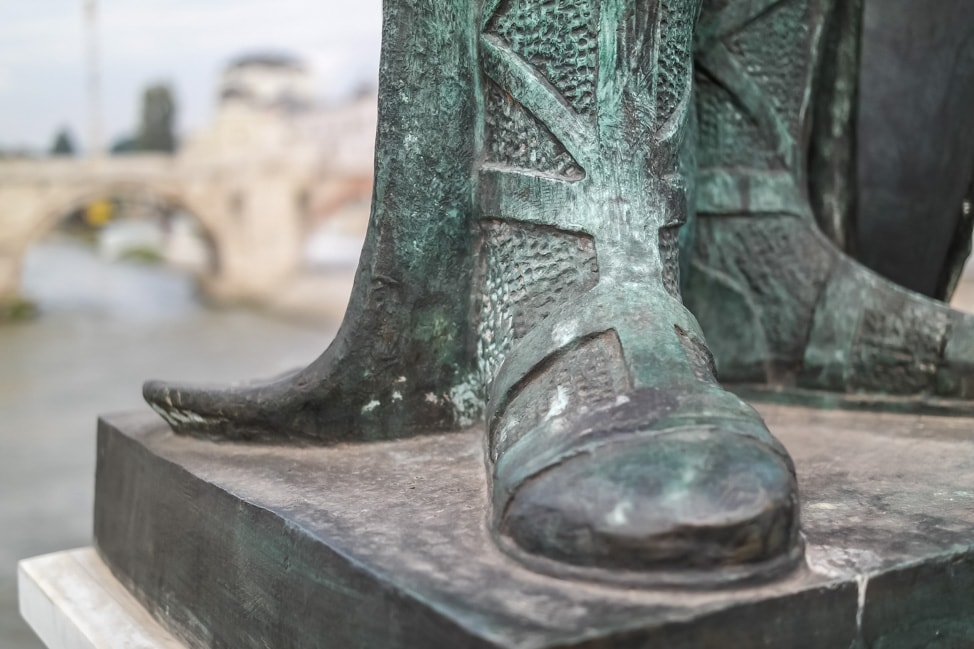
The Skopje 2014 project has been polarizing for locals. Some are happy for the development efforts and believe that the flashy city will attract visitors and businesses for years to come. I completely understand this perspective. The entire city center is clean and polished, and definitely jaw-dropping.
Most of the buildings in the city center are elaborate neo-classic structures, full of towering columns, ornate details, and smooth, shiny marble. Except, they are not actually historic, or old. In fact, they are almost entirely new construction, and simply facades plastered on the exterior.
Sort of the like a Macedonian version of a themed Las Vegas casino.
Others are appalled that the country is spending much needed capital on frivolous decorations. There is a lot of anger about two statues in particular – one of a shoe shiner, and one of a beggar. These statues are meant to represent the plight of the working class, but the cost of building the statues could have been used to actually do some good in relieving that plight. Current unemployment in Macedonia hovers around 30%.
Peaceful protestors show their disagreement with the project by defacing statues with pastel paint, in what was deemed the ‘Colorful Revolution’ by the locals. The city quickly clears the paint away.
And the statues keep going up.
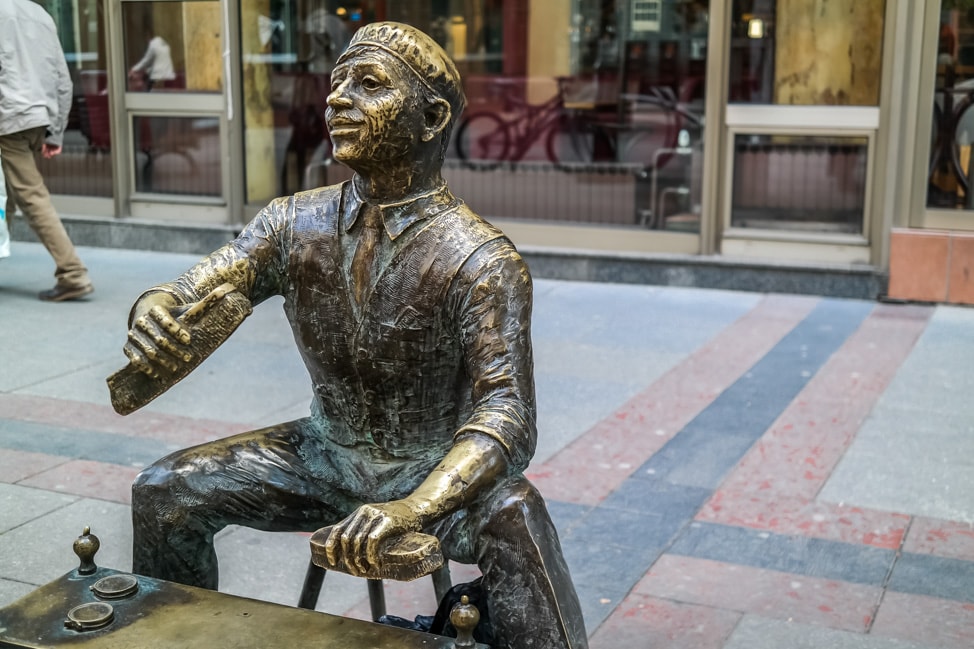
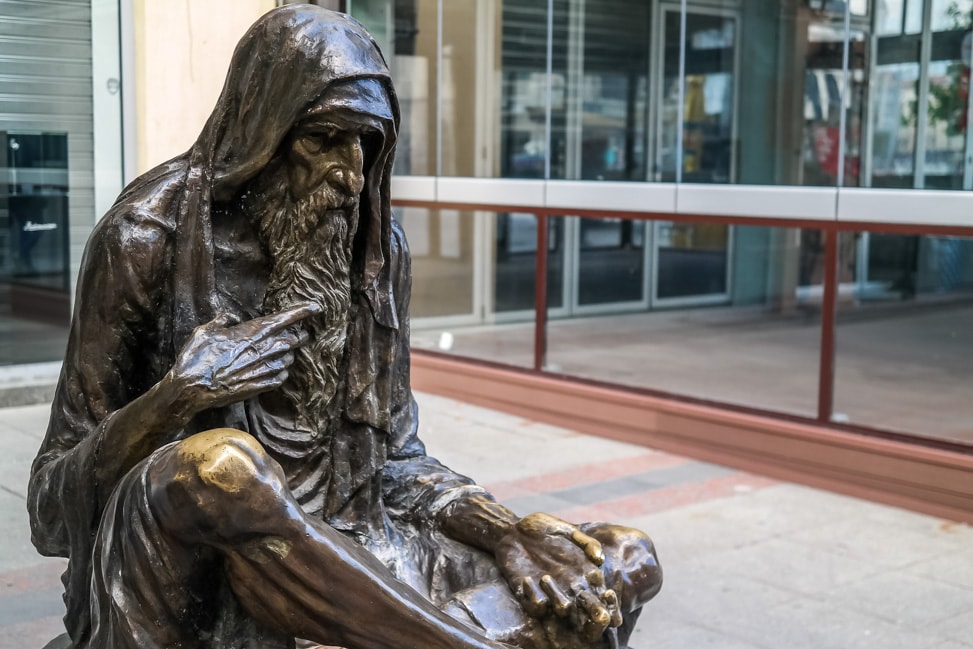
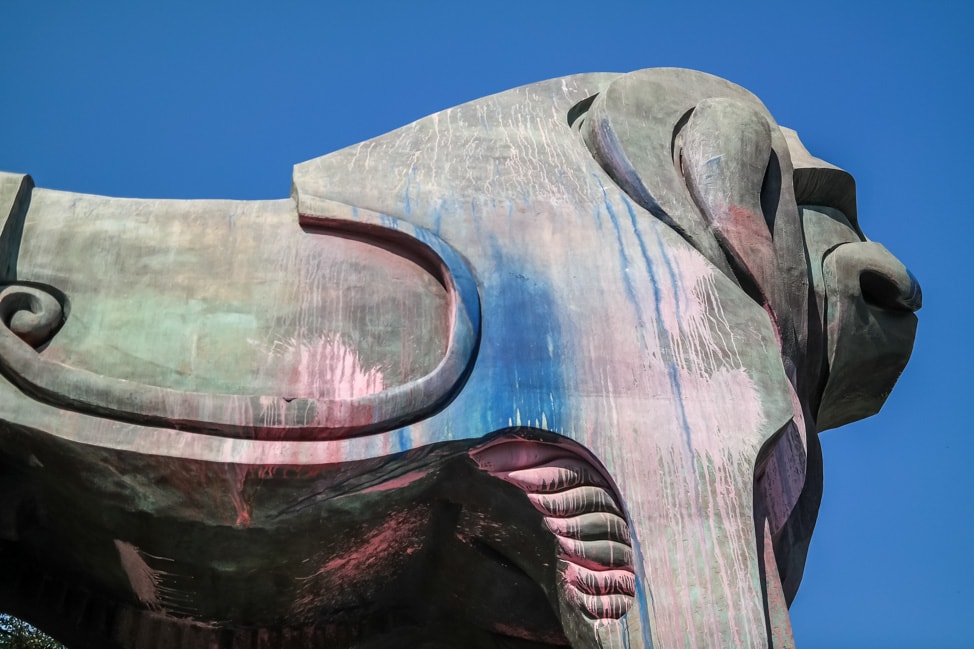
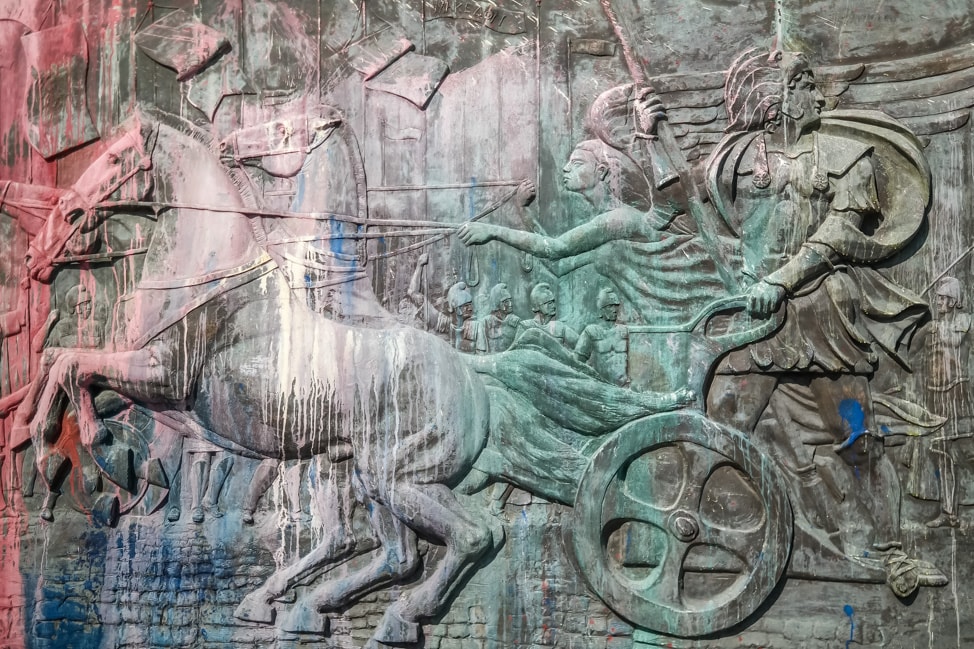
Two important figures soar high above most of the statue landscape. The first is Philip II, Alexander the Great’s father. He is in a victorious position, and below him is an elaborate fountain feature. The second is a woman’s figure, at the center of the most prominent bridge. She represents a priestess from an ancient civilization in the area.
The statue was spinning when it was first constructed (only a few years ago) but the mechanism has defaulted so now she remains still.
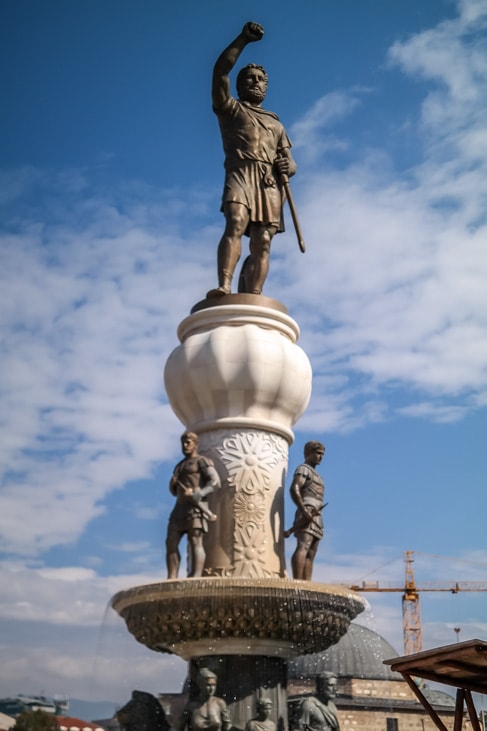
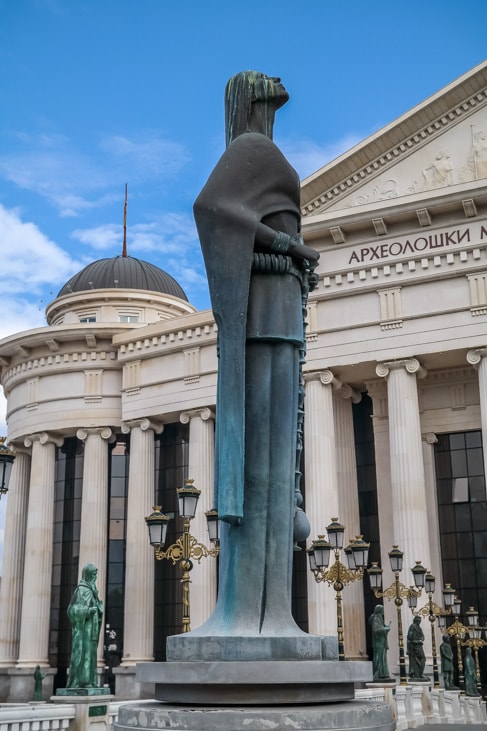
The piece de resistance of Skopje 2014 is the massive statute of Alexander the Great, currently the largest in the world (see lead photo). The statue has reignited some deep-seeded tensions with Greece, Macedonia’s neighbor to the south. Both countries lay claim to the great leader. He was born in Pella (what is now in northern Greece), but the northern Greek region of Macedonia, and the country of Macedonia, have long-held gripes with each other, not least of which is its shared name.
Greece is in the process of building an even bigger Alexander statue, which will be housed in Thessaloniki, the largest city in Greece’s Macedonia region.
The true number of statues in Skopje is actually unknown. When the budget was originally set at €80 million, the plan was for 20 buildings and 40 statues. By 2015, the budget ballooned to €560 million, the documented cost of 130 objects that were available by public record. We’re now in 2016, and there is no end in sight.
How many statues are there in Skopje? Just do the math.
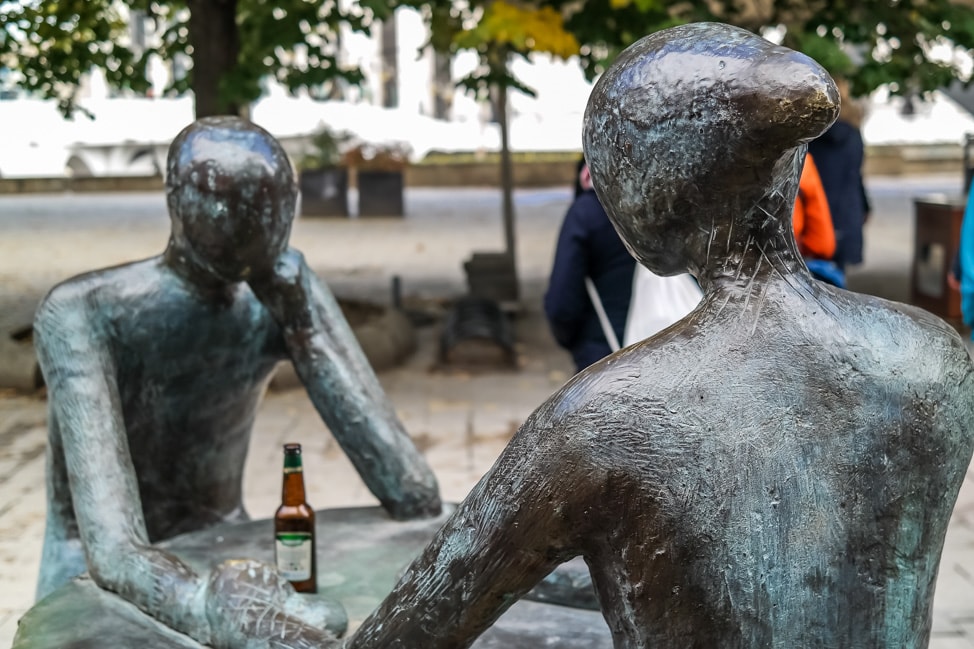
We did learn that not all statues are being built with marble and bronze. Those were the materials of choice for the first phase of the project, but now some statues, particularly those on top of buildings which are not subject to close scrutiny, are being constructed from cheaper materials and then covered in the more expensive stuff.
One day, as we wandered around town, we actually saw a storeroom filled with incomplete new statues. Who knows where those will finally rest.
Here’s a conundrum for you. Skopje is lining bridges and buildings with statues representing important historical and religious figures. This is a normal practice found, well, everywhere statues are built. But what do you do when you run out of people to represent? There are already statues dedicated to the cousin of a lesser-known bishop, and the father of an ancient ruler. This is a hurdle that the project leaders are actively trying to overcome.
In the meantime, they are just copying some of the world’s best known statues, like this bull, lovingly swiped from New York City fame.
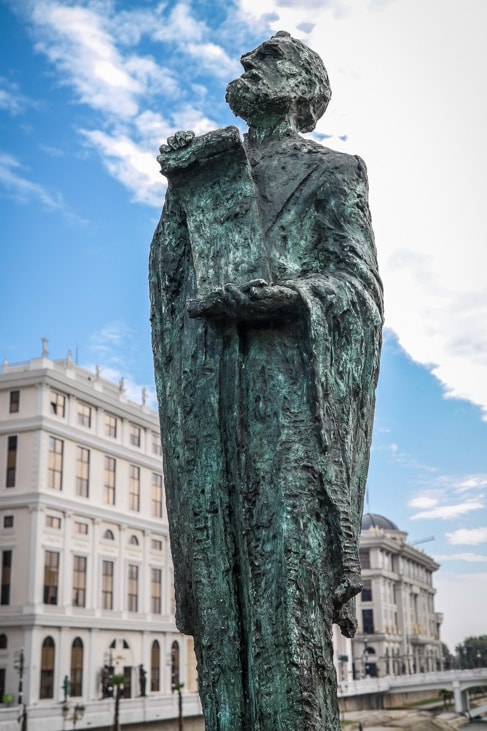
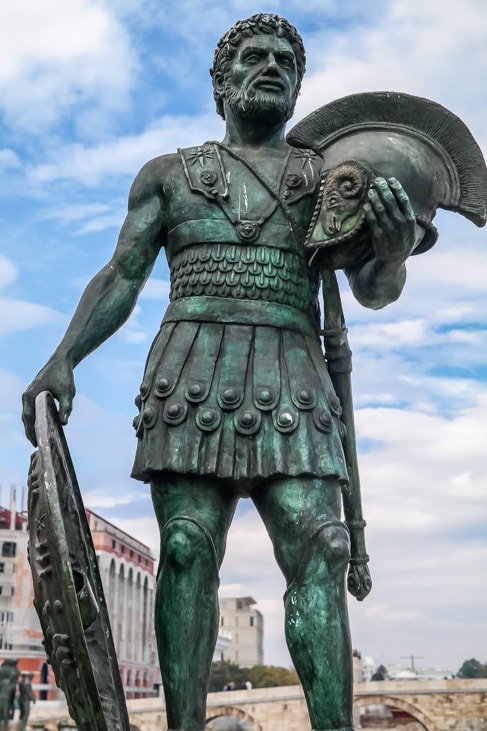
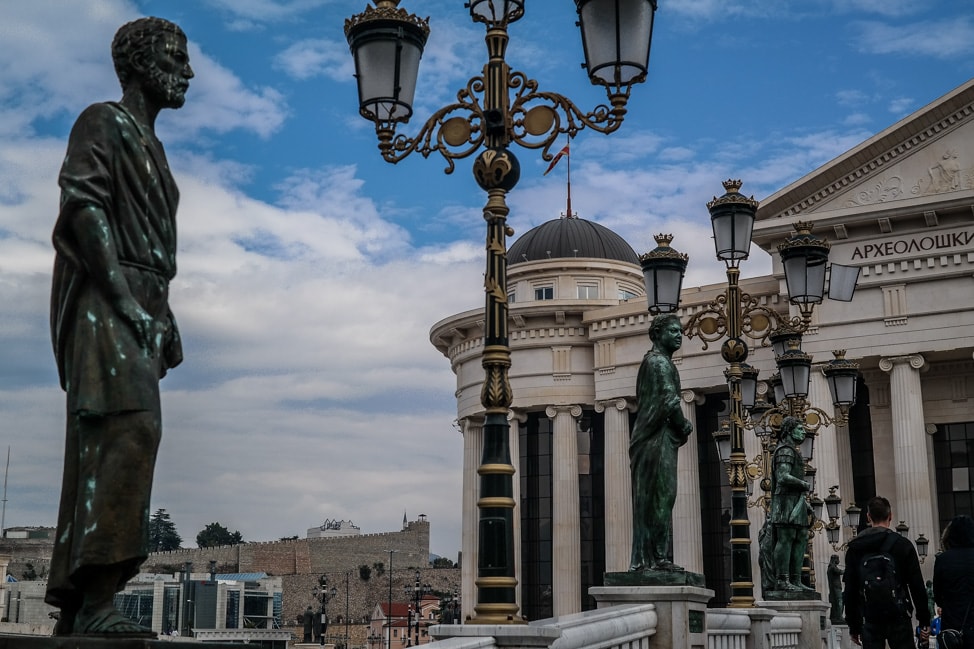
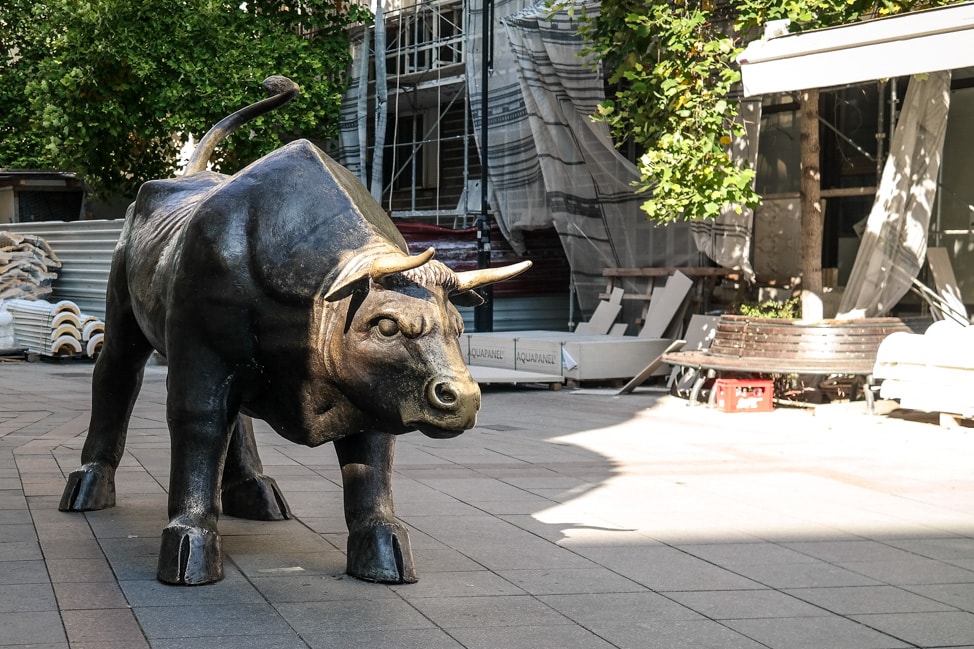
Skopje is also building plenty of statues to represent normal people. A scantily-dressed young woman, on her cell phone, walks down a pedestrian street just down the road from Mother Theresa (she was born in Skopje). Random busts of businessmen abound, with no plaques identifying them. So, either we’re supposed to know who they are, or they represent business and industry.
Either way, pretty strange.
One of my favorite series is the grouping of more abstract figures near the newly built theater. They are Tim Burton-esque, and just creepy enough for my taste. The strange proportions, the rusted harp, they are artistic and full of life.
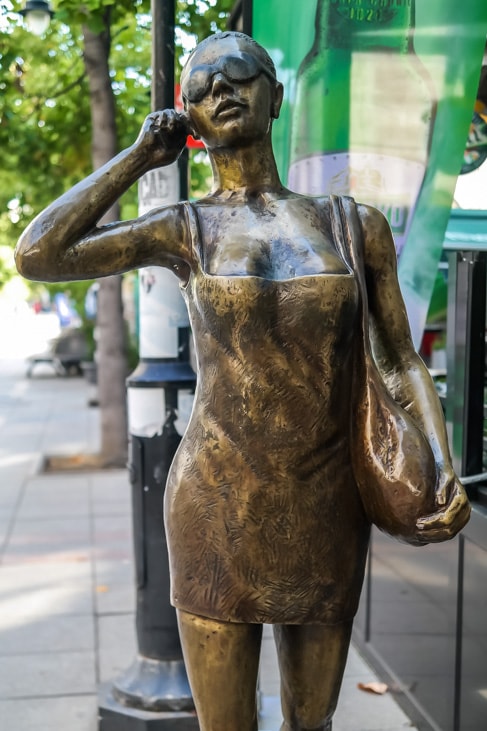
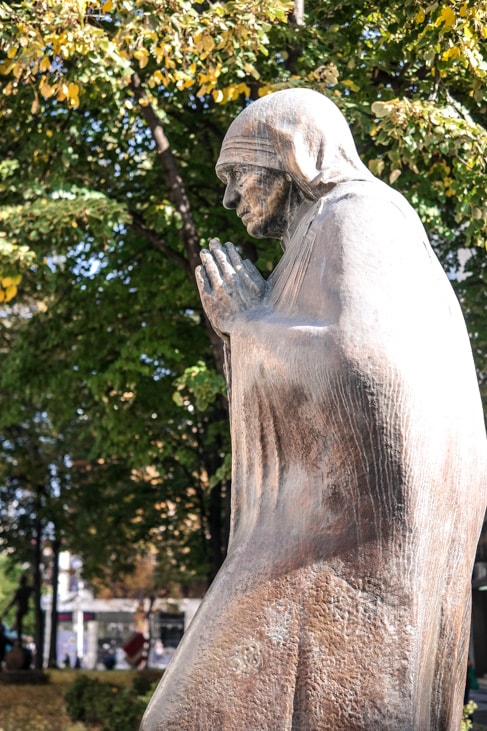
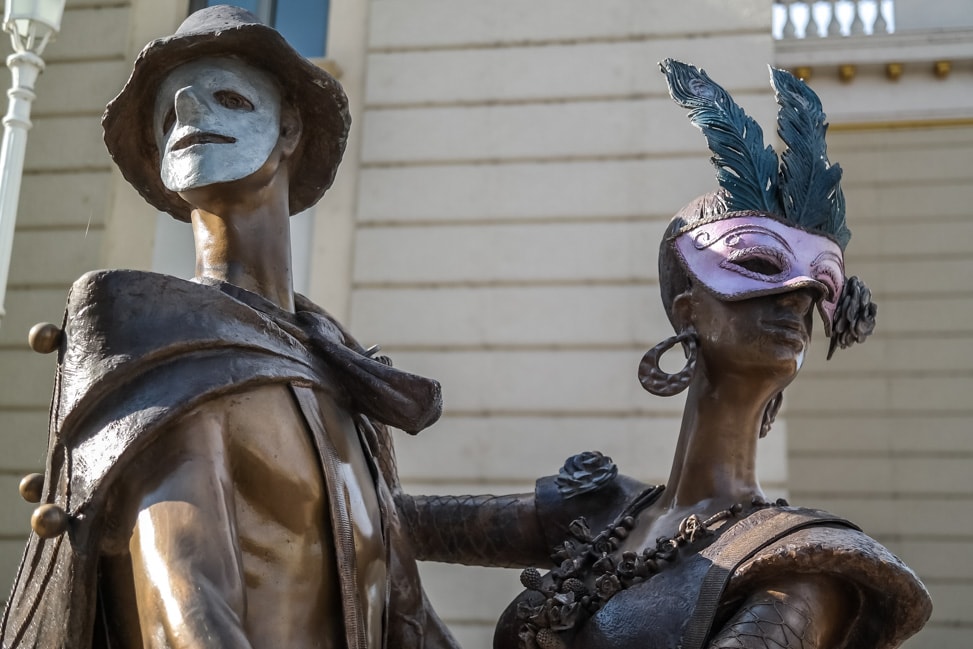
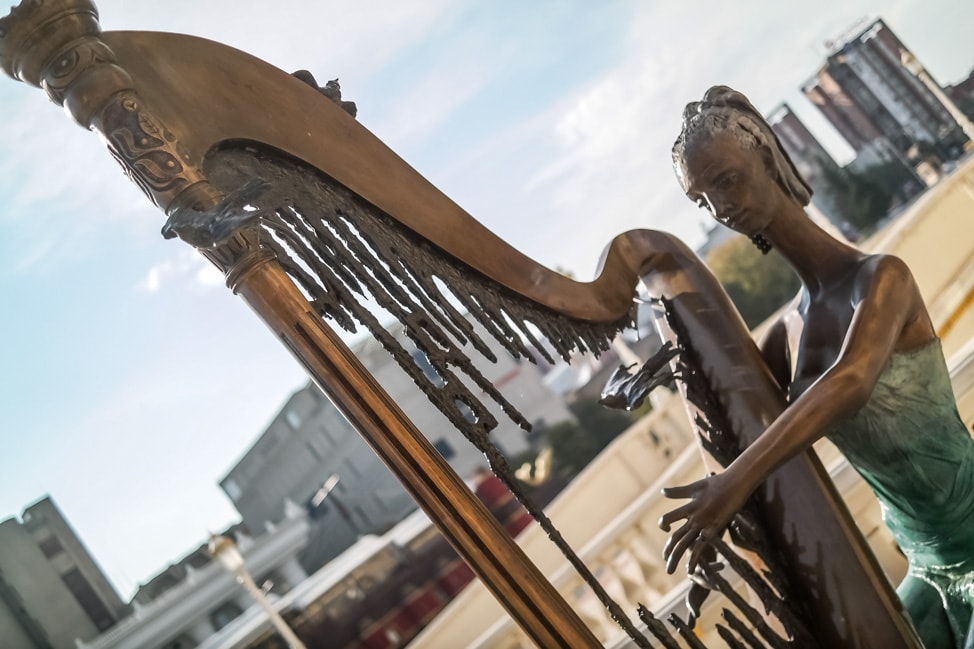
If statues are king in Skopje, fountains are queen. From one vantage point (near the archaeological museum entrance) you can see a total of six working fountains. And not just any old fountain. We’re talking massive, multi-tiered fountains with lions and horses and nursing mothers. There is something for everyone, that’s for sure.
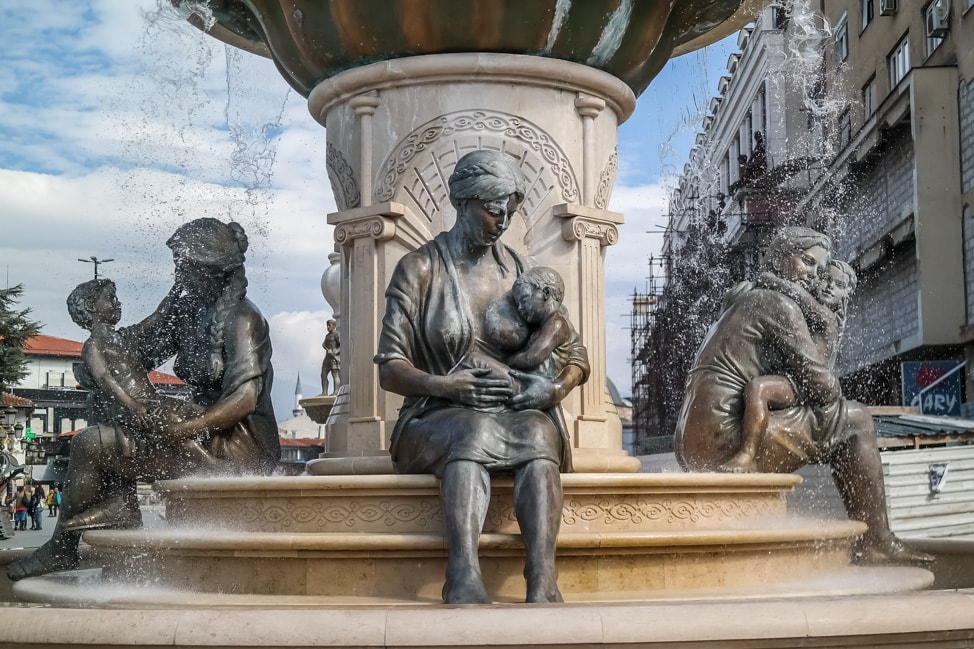
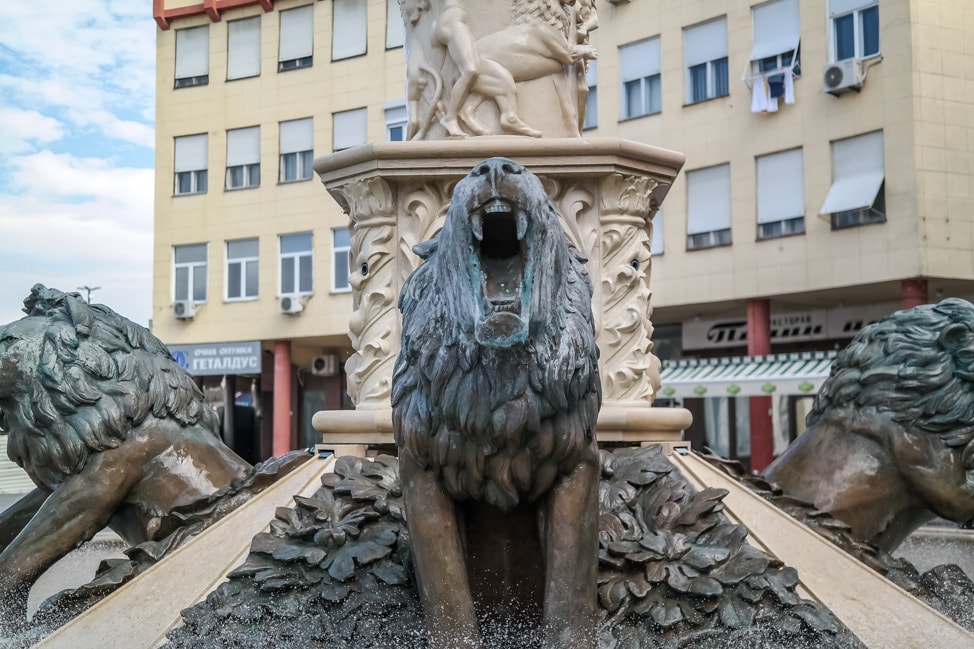
Skopje 2014 is a massive undertaking, and one that continues to develop. You may love it, you may hate it, but it inspires feelings from nearly everyone. It’s hard to get past the ostentatiousness of so much bronze, the efforts to make a three-year old fountain look ancient. But it’s also fascinating, a true study in human pride and ingenuity. With maybe a little competitiveness and self-service thrown in for good measure.
You know the famous moving line, if you build it, they will come. Well, Skopje’s counting on it.
